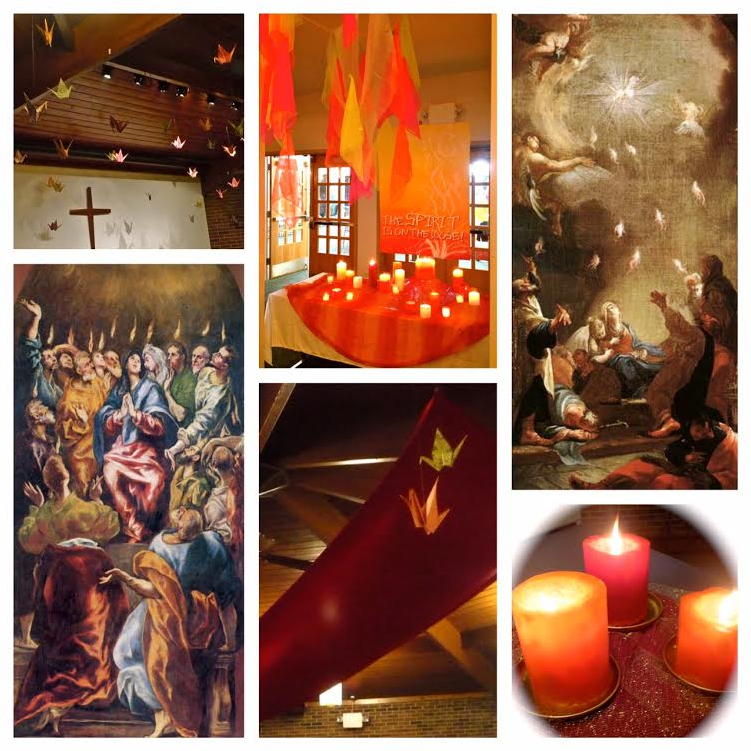Glimpses of Healing and Hope
Glimpses of Healing and Hope

June 6, 2016
by: Jane Bishop Halteman

Even though summer doesn’t actually begin for several more weeks, Memorial Day appears to open the season unofficially. We’ve already had a taste of summer in South Bend this last week and the beauty of the season has manifested itself by providing things to do, people to see, places to go. Why not grab a small group member, area group friends, someone you know well, someone you’d like to get to know better, or a newcomer and take in some of these local simple pleasures of the season!
Here are five things I love about summer in South Bend:

Visiting the South Bend Farmers’ Market has delighted me since before I moved to town five years ago. I appreciate the fact that it is open year-round, but the abundance of growing things fresh from the garden in late spring and summer is a sight to behold. Packed with the vibrant energy of lots of people if you go late enough on Saturday morning, I also find it relaxing to roam leisurely the 96 stalls located in two houses on days that are less crowded (Tuesday, Thursday, Friday from 7 to 3 during the summer months), when I am able to take time to talk to my farmer/vendor friends, some of whom now call me by name.
That’s not only witness to how often I visit the market, but a testament as well to how important customers are to regular vendors. As its webpage states, the market “is a place that allows you to form a personal relationship with the people who produce your food. This vital connection strengthens the community by preserving a food industry based on family-owned farms and small-scale businesses.”
The market is my go-to place for bananas at Johnson’s Produce, maple syrup and weekly bouquets in season from two Lemler stalls, vegetable starts for our garden from The Glenn Vite Farm, as well as the vegetables from a number of stalls that we eat all summer long (and beyond) because we don’t grow them ourselves.
I often stop for coffee from Ashley at DeLo’s Cafe. She remembers my preferences (except when I occasionally switch from hot to cold or change flavors) and recommends new things to try when I’m ready for a change. I like learning how the weather is treating farmers Curt and Mark at Hetler Farms, where I buy beets and carrots all winter and supplement our own produce in the summer months. Elaine of Hovenkamp’s Produce makes my day with delectable mushrooms, scads of recipes, and a cheery presence on Saturdays. Rachel at Ridge Lane Farm always has the organic potatoes I need for summer salads.
Spending time at downtown festivals and seasonal events is a good choice if you don’t mind crowds and go prepared for the elements. The Leaper Park Art Fair is just around the corner June 18 and 19, going on as usual for the 49th year but with some traffic challenges this summer due to downtown road construction nearby. (See info on how to avoid traveling issues here.) Art Beat is another fun Saturday event (August 20 this year), and Downtown South Bend Architectural Walking Tours look like a good bet for $2. This season’s remaining tours will take place on June 3, July 1, August 5, and September 2, according to this website, which offers reservation information. If you’ve never done a First Fridays in South Bend, you might want to wander downtown for these special occasions, hosted from 5 to 9 every first Friday of the month. More on those events can be found here.
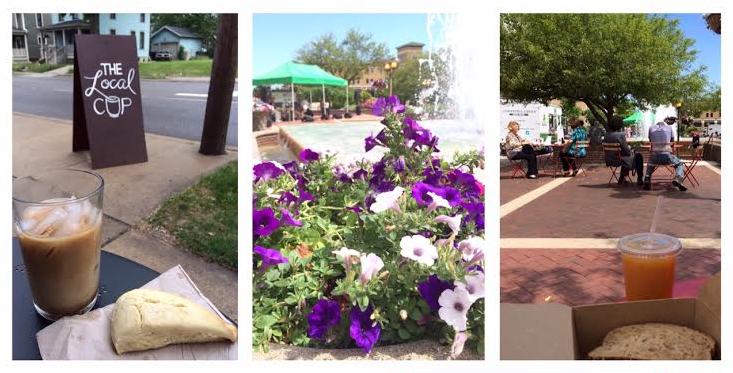
Lunching at Fridays by the Fountain or Red Table Plaza Concert Series is a fun way to go if you can be downtown over the noon hour. The fountain series is a special treat for me because our daughter-in-law helped launch it 15 years ago while employed at the Morris Performing Arts Center. The 2016 series began this past Friday and will continue through August 26. This site offers details. Mondays, Tuesdays, Wednesdays, and Thursdays through September, weather permitting, local musicians will play from 11:45 to 1:15 during the Red Table Plaza series at Studebaker Plaza on the southwest corner of Jefferson and Michigan. Check this site for musician line-up and restaurants offering grab-and-go menu options for these events. It was a pleasant surprise to find The Grateful Green Food Truck at this past week’s event. (If you are not already acquainted, check here to stay in touch with the truck’s location from day to day.) And it’s always fun this time of year to hang out with friends and neighbors at your local small business, like the Near Northwest Neighborhood’s Local Cup.
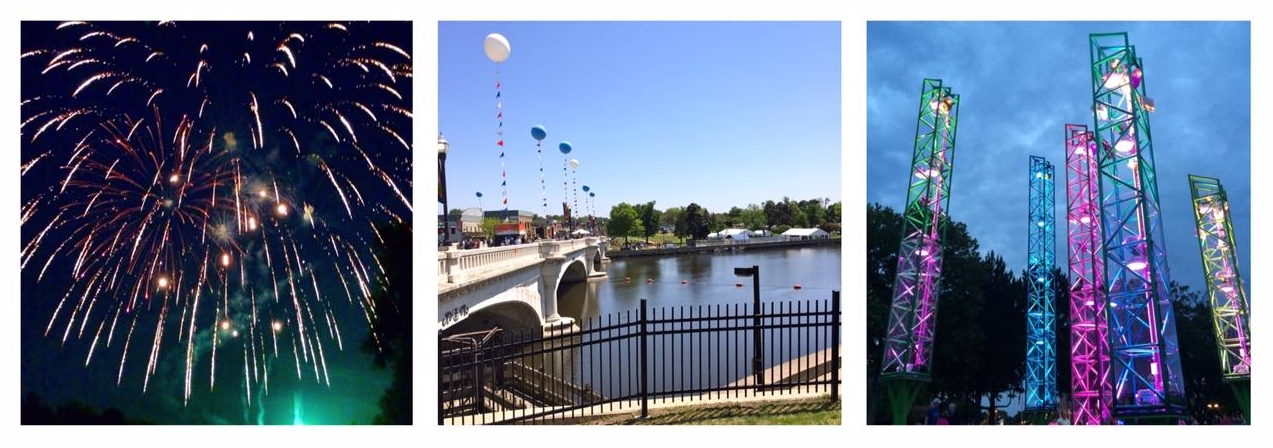
Retreating by the Saint Joe River has been a favorite pastime of mine since our move to South Bend. Find your own preferred spot close to home or on the other side of town, near a river walk feature or bike path, or visible from the outdoor veranda of your favorite local restaurant. Don’t forget to take time to view the River Lights, which come on half an hour before sunset and remain interactive (see this website for more information) until midnight. Seitz Park, Colfax Bridge, Island Park, and Pier Park are reportedly the best spots for viewing the River Lights installation. “Color splashes from two interactive light sculptures on either side of the river, amplifying the majestic cascade of water, joined with a third sculpture highlighting the exquisite ‘Keeper of the Fire’ statue, and symbolically uniting the two sides of the river,” the website reports.
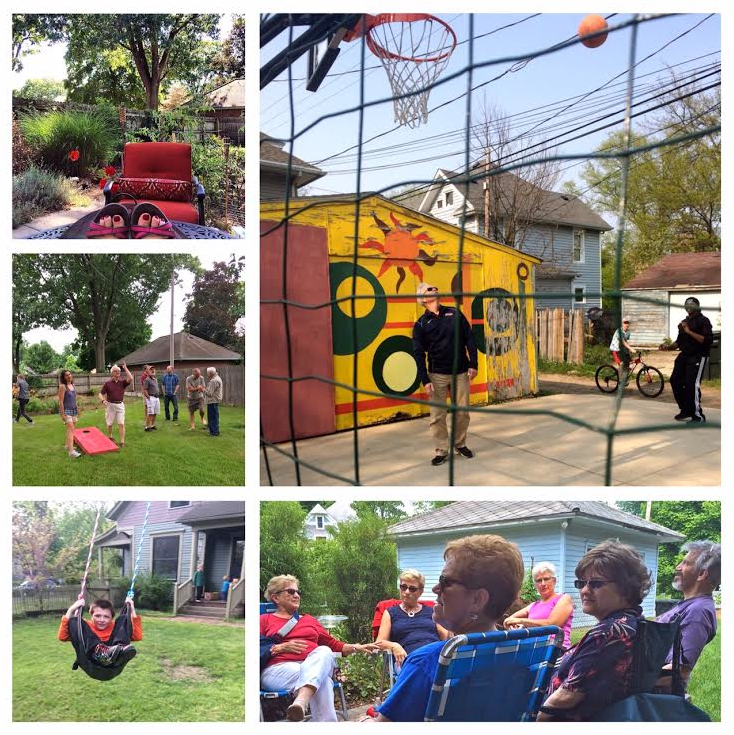
Enjoying back yard gatherings and personal solitude are highlights of the summer for me. I love it when birthday parties, small group potlucks, even area group gatherings take place in our own yards. We can enjoy the beauty of nature together, play outdoor games, and do messy art projects with the kids. And it’s great to find a quiet space at home to have a solitary morning coffee while watching birds build their nests or bees buzz their way through the garden. Jenny Wren was singing the morning I caught the first rays of sunshine last week with coffee cup in hand.
This list of summer fun in the Bend is by no means exhaustive. Branches of the St. Joseph County Public Library are a good place to spend lazy summer days, to find a change of scenery, to take the kids or grandkids to check out a new book or video. You can’t go wrong with free concerts on Sundays from 4 to 7 at the East Race/Seitz Park series or the Potawatomie Park series which typically is scheduled for Sunday evenings. Google to find out who is performing and exact times.
Take time to notice where you see the hand of the Divine as you interact with others in these summer settings. How do you observe your hunger and thirst for authentic spiritual vitality being filled by life’s simple pleasures?
Add a commentMay 30, 2016
by: Jane Bishop Halteman

Growing season has arrived in Michiana…that time to plant cucumbers and squash, chives and basil, green peppers and grape tomatoes if you’re a salad gardener. This early in the season, you might need to supplement with farmers’ market greenhouse lettuces and last year’s successfully wintered-over root vegetables. I find myself drawn to photograph the new green shoots of life rising from the garden as well as the farmers’ produce which arrives on the scene earlier than what’s growing in our garden.
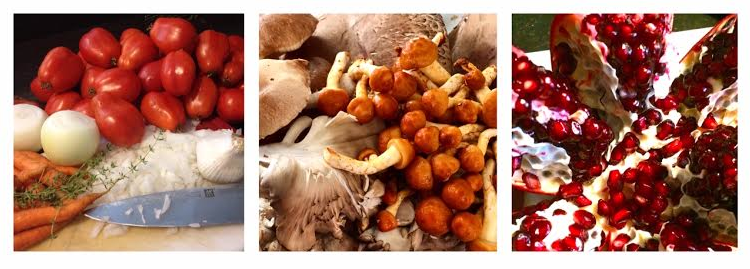
From the first spring crocuses and daffodils to the present profusion of poppies and iris, backyard flower gardeners are likely to be photographing their floral successes or watching friends’ Facebook feeds, regularly streaming since snow’s departure a parade of perennial flowers and blooming trees, including forsythia, grape hyacinth, viburnum, flowering quince, weeping cherry, redbud, dogwood, bleeding heart, lilac, honeysuckle, lily of the valley, rhododendron, forget-me-nots, star of Bethlehem, weigela, and even the splendor of dandelions.

Ten years ago on a trip to Europe with Jim’s economics students, I began taking photos of trees…not just ordinary trees, but trees whose gargantuan trunks or looming shadows or unusual leaf arrangements spoke to me about something beyond simple documentation. They weren’t the kinds of photos I showed my friends on our return home, but I began experimenting with some of my tree and flower photos by turning them into laminated cards I handed out in contemplative Sunday school classes.
Many years after I started practicing the spiritual discipline of contemplative photography without benefit of training or even knowing that such a thing existed, I learned from Jan Phillips’ book, God Is at Eye Level, that contemplative photography is a powerful way to express faith and share values and commitments. “Photography can be our access into new worlds that tear our hearts and minds wide open, a press pass to intimacy,” according to Phillips.
The jacket of Phillips’ book says this: For amateurs and professionals alike, this book is the story of photography’s power to renew the spirit. Jan Phillips helps us transform sight into vision, leading us to see that images can be mirrors for our deepest truths, even in our simple snapshots. “The real thing about photography,” Jan says, “is that it brings you home to yourself, connects you to what fulfills your deepest longings. Every step in the process is a step toward the light, an encounter with the God who is at eye level, whose image I see wherever I look. There’s something holy about this work. Like the pilgrim’s journey; it’s heaven all the way.”
Christine Valters Paintner, author of Eyes of the Heart: Photography as Christian Contemplative Practice, offers this handout which describes visio divina practiced with photography as “a way of seeing the world with the eyes of the heart, which is the place of receptivity and openness, rather than with the mind, which is often the place of grasping and planning. It is an adaptation of the ancient practice of lectio divina.”
She invites practitioners to take a camera on a contemplative walk, “a walk where your sole focus is on being present to each moment’s invitation as it unfolds, rather than setting out with a particular goal.” Her suggested process involves “settling and shimmering” (noticing what calls your attention), “savoring and stirring” (noticing what happens inside yourself), “summoning and serving” (noticing the invitation which rises from your prayer), “slowing and stilling” (noticing the entire experience in the stillness).
Valters Paintner maintains that “as a Christian contemplative practice, photography enables us to polish our inner mirrors and to discover the holy within ourselves and in everything around us.”
I’ve come to appreciate several important take-aways from exposure to Phillips in an on-line class hosted by Spirituality and Practice. The first is this: “Remember that you are an artist. You have a craft. You are gifted with a unique imagination. And you can make a difference anywhere you choose. That’s how photography becomes not just something you enjoy doing, not just a hobby, not just a creative endeavor–but a spiritual path.”
Another meaningful gleaning from Phillips suggests that contemplative photography can lead to her understanding of transformation: “Transformation originates in people who see a better way or a fairer world, people who reveal themselves, disclose their dreams, and unfold their hopes in the presence of others. And this very unfolding, this revelation of raw, unharnessed desire, this deep longing to be a force for good in the world is what inspires others to feel their own longings, to remember their own purpose, and to act in accordance with their inner spirit.”
I also found this site, created by the Through the Lens worshipping community in Sioux Falls, IA, helpful for those desiring to take up contemplative photography or looking for a supportive on-line community already involved in the practice.
What are YOU photographing? To what subject matter are you drawn? What does your focus have to do with your faith, your commitments? Do you see the relationships? Can you discern the connecting threads?
Here’s an assignment if you feel drawn to this style of paying attention as you seek the Divine: Take time, inside or outside, to find photographic impressions that “bring you home to yourself, connect you to what fulfills your deepest longings.” Think about what you want to convey, what feelings you want to share, with photos, rather than with words. Perhaps you will know first what you want to convey and then find the photo vehicle, or perhaps the photo opportunity will find you first and you will discover what it is that you want to convey.
Seek out a companion or a community of like-minded folks with whom to share your photos, offering as well the themes to which you are drawn and where your faith and commitments intersect with the photos you have created. How are your eyes of the heart being opened as a photographer? What does the camera catch that you as photographer may have missed? Are other photographers’ contemplative photos helping to open your eyes of the heart? How is photography already a spiritual discipline for you or how do you imagine it might become that? What glimpses of healing and hope does this spiritual discipline allow you to see?

May 23, 2016
by: Jane Bishop Halteman
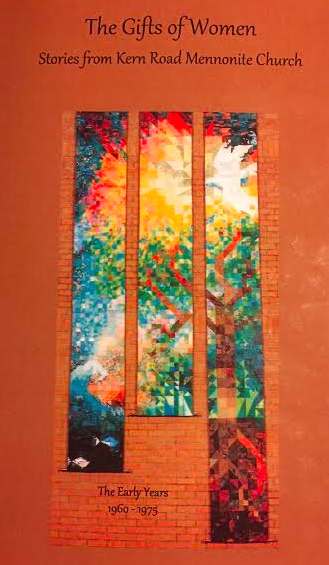
The Gifts of Women, Stories from Kern Road Mennonite Church, records narratives of the lives of 19 women who helped shape the congregation during its early years from 1960 to 1975.
During KRMC’s sharing time on May 8, compilers Pat Frazier and Trudy McManama presented first copies of the book to those women who shared their stories in the book and to representatives of those no longer with us or those unable to be present that day.
“The women of Kern Road Mennonite Church have been central to the congregation’s life and ministry across the years, and here we see why. From childhood to retirement, their stories of strength and struggle, faith and faithfulness inspire the rest of us for the living of these days,” says Steven Nolt on the book’s back cover.
Janice Yordy Sutter, pastor of preaching and community life at KRMC, is also quoted on the back cover: “These are the stories of amazing women! Each woman’s story is unique, yet each recounts real life challenges, personal perseverance, and a deep abiding Christian faith.”
Check out these snippets from some of their stories…
Esther Schmucker, who passed away in October 2015 at the age of 97, was the congregation’s oldest member and mother to KRMCer Phil. Her husband Tobe established South Bend's Hope Rescue Mission while she was busy raising their five sons. Eventually Mennonite families who arrived in South Bend for jobs “began gathering in one another’s homes for fellowship. As the group began to coalesce, their meetings shifted from home gatherings to regular worship at the mission."
Focusing on Faith and Family is the title of the chapter about Phyllis Troyer. Soon after their arrival in South Bend, she and husband LeRoy and infant son Terry were invited into the local Mennonite fellowship by Tobe Schmucker. “When the fellowship evolved into a start-up church, the Troyers were among the 16 charter members.” Already beginning to think beyond their meeting place at Hope Rescue Mission, “the next step was building a church. In 1961 land was purchased and LeRoy began drawing plans for what was to be Kern Road Chapel, even though his formal training as an architect still lay ahead of him.”
As Luella Gerig’s husband was completing a four-year surgical residency in Indianapolis, “they were looking to settle in a place that had a Mennonite Church. They learned that a physician in Mishawaka wanted to find someone to come to the area, and at the same time they heard that a church was being started in South Bend.” Luella has made many contributions to KRMC, including starting a library of donated books at Kern Road Chapel.
Mary Jo Miller and husband Lloyd began sharing “their musical gifts with the tiny congregation that gathered for worship at Hope Rescue Mission. Lloyd led singing and Mary Jo played the piano, roles they continued to fill for many years as Kern Road Mennonite Church grew from this modest beginning.”
Marceil Yoder, whose chapter is entitled Rooted at Kern Road, expected she and Don would attend a local church when they moved to Greencroft Goshen a few years ago, but “they are still faithful attenders at Kern Road. Their roots there proved too deep and their ties of friendship too strong to leave behind.”
Betty Nissley and husband Homer “contributed to Kern Road in many ways including cleaning the building for several years. Both served as elders, Betty from 1991 to 1998 after her children were grown.” Their big brick home comfortably housed their own seven children, along with foreign exchange students. “Whether you were a new arrival to South Bend, a young pastor, a teenager needing a safe place, a young adult from Africa wanting to study English, or a retiree coming back to the area, you were welcome.”
Since Eleanor Shoup and husband Owen joined Kern Road in 1964, she “has been an active member. She fondly recalls bus trips to Chicago with other women and years of teaching Sunday school….After Kern Road acquired a pipe organ, she took organ lessons at Associated Mennonite Biblical Seminaries (AMBS). She says she finds practicing especially comforting and enjoyable” and still plays for services on occasion.
Iva Rench and her husband, who began attending the church not long before the 1965 Palm Sunday tornadoes swept through the area, “deeply appreciated the way the congregation pitched in to help with the post-tornado cleanup. That support contributed to their decision to become members,” according to Iva's story.
“In the early 1990s Lorna Longenecker began creating visual displays for Sunday worship services….For several years, she volunteered at Ten Thousand Villages, and she still maintains the rotating display” of merchandise near the welcome center.
“One Sunday in the late 60s, Katherine Eggermont remembers being warmly welcomed by Marceil Yoder and responding to that warmth. The potlucks, with everyone eating together and having a good time, were new to her. Soon she was teaching Sunday school. She became a member in 1979.”
Norma Jean Neff, who arrived at Kern Road in 1973 when her husband Larry began a job with Goodwill, “was heavily involved with Ten Thousand Villages from its beginning in 1992 under the name Global Gifts.” She began ordering product when the first manager became ill, and she was asked to serve as manager in 1999. “For the next six years she asked the board to put the manager’s salary in a special Jubilee Fund, and every month she chose an artisan group to receive it.”
Phyllis Miller, who began attending Kern Road with husband Joe via their daughters’ invitation to Bible school from their teacher Eleanor Shoup, faced a particularly difficult time in August of 2012 when Joe was diagnosed with mesothelioma. “All the friendships and spiritual resources that they had built up over the years gave them what Phyllis terms ‘a tremendous support system.’” She had begun working as office manager at the church after a long-time manager retired and “was able to continue working until shortly before Joe’s death in January 2014. She says that being of use in the office and having constant contact with pastors Dave and Janice Sutter was a godsend.”
Gloria Gibson and her husband Milt became members at Kern Road in 1975, where they quickly felt a connection after visiting other area churches. “She especially appreciated being with other families whose children were the same age as hers. She pitched in by teaching Sunday school and helping with the Fellowship Committee.” Now Gloria serves on the congregation’s visiting care team.
This story collection of Kern Road women who began attending during the congregation’s early years offers many more details of each of their lives. Contact Pat or Trudy about buying a book for more glimpses of healing and hope at KRMC!
Add a comment
May 16, 2016
by: Jane Bishop Halteman
The photos above, including the 1596 work by El Greco (left) and Mildorfer’s piece from the 1750s (right), feature tongues of fire or brightly colored doves, fabrics, and candles representing most of my past Pentecost experiences
Yesterday was the feast of Pentecost, final day of the season of resurrection, of Eastertide, as we tend to call it at Kern Road, and observance of the descent of the Holy Spirit on the apostles and other followers of Jesus.
“Pentecost, 50 days after Easter Sunday, celebrates the coming of the Holy Spirit and the birth of the church. As the Holy Spirit fell on the disciples, the barriers of language and culture were broken down, not so that everyone thought and looked the same, but so that everyone understood each other in their own language and culture. This festival draws us beyond the resurrection to remind us that through the coming of the Holy Spirit we become part of a transnational community from every nation, culture, and social class,” Christine Sine wrote some years ago in a Pentecost post at Mustard Seed Associates’ Godspace website.
The Spirituality and Practice website suggests that Diana Eck, in her book Encountering God, “describes the dramatic and creative ways Pentecost was celebrated in the Middle Ages. Some churches had ‘Holy Spirit holes’ in the ceiling to symbolize their openness to God. On Pentecost, doves were released through the holes and bundles of rose petals were dropped from them onto the people gathered inside. Choirboys moved through the congregation making whooshing sounds and playing drums to remind everyone of the rush of the Spirit.”
Jan Richardson’s Blessing for Pentecost Day speaks of the grace that scorches us. She says, “If we didn’t know it before, we surely know it now, as the second chapter of Acts unfolds: this is no tame God who comes to us, no safe and predictable deity. This is the God whose loving sometimes takes the form of scorching. Before he left, Jesus told his friends he would send them the Advocate, the Comforter. Now we see this Comforter coming as wind, as flame, reminding us that comfort is not always comfortable, for it makes itself known in community, where we find the most searing challenges—and the deepest blessings—we will ever know.”
Pentecost celebrations have been more about fire than wind in previous congregations in my past, so it was a somewhat stretching experience to focus during Kern Road’s 2016 Pentecost service on the atmosphere as a part of the creation for which we are charged with caring, as we also considered how God’s breath was loosened to blow across the face of the earth on that first Pentecost.
Our Pentecost worship service reminded me of retreats I helped lead a few years ago based on Christine Valters Paintner’s book entitled Water, Wind, Earth and Fire, in which she suggests in her chapter on wind that “the metaphor of air or wind offers us a variety of ways to understand our experience of God: as life breath, as inspiration, as enlivener, as directional guide, as powerful force, or as the current that supports flight.”
In connection with these categories, retreat participants asked themselves how they experienced the gift of breath and where in life they needed to breathe more deeply; where in life they felt asleep and where they sensed the need to be awakened; how they might lean into the Source that supports and buoys them; how they might embrace the gifts hidden in suffering rather than banishing the suffering; and when they had experienced the current of the Spirit lifting them.
Retreatants practiced “getting in touch with the wind” by blowing bubbles, walking in the wind, watching birds take flight, noticing trees and flowers blowing in the breeze, considering the power of a windmill, listening to wind chimes, using art supplies to draw representations of the wind, writing poetry or Haiku about the wind.
Memories of that retreat, co-mingled with representations of Pentecost’s tongues of fire which always have had a powerful influence on me at this time of year, remind me again that the wind and fire of the Spirit are available to us, though certainly not at our beck and call. Where have we seen Divine wind and fire at work in our lives or the lives of others?
Add a comment
Hope in liminal spaces
May 9, 2016
by: Jane Bishop Halteman
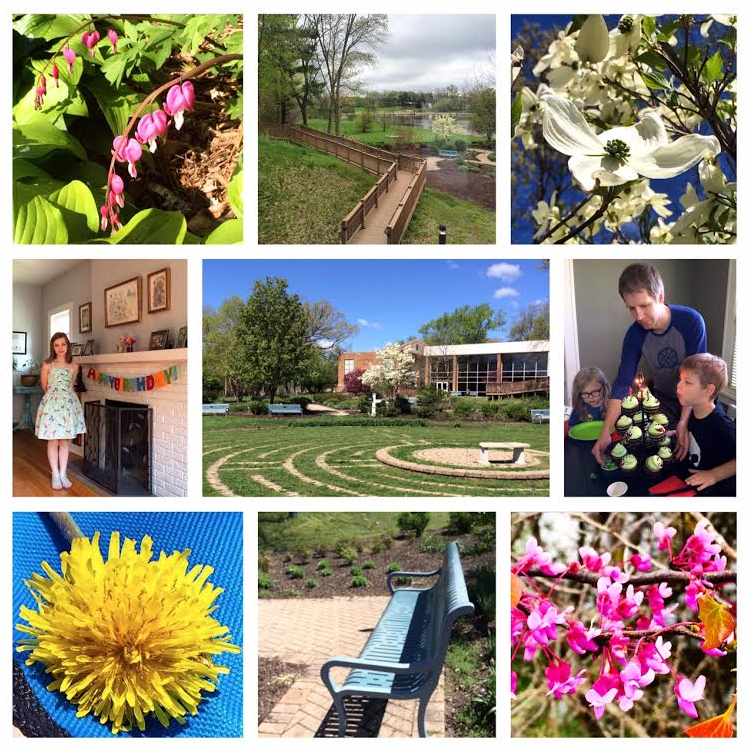
Living into the resurrection sometimes means waiting in liminal spaces, making transitions, understanding only that change will be coming without knowing exactly what, when, or where.
In the last several weeks, I’ve attended Goshen College’s graduation, participated in a spiritual directors’ retreat on the theme Abundant Life in Liminal Spaces, experienced my eldest grandchild turn 11 a few weeks after her brother turned 8, and participated in a 70th birthday party as a steady stream of my high school and college classmates move into their eighth decade this year.
Whether it be a birthday, graduation, or some other life milestone, transitions can be difficult. Leaving your booster carseat behind at 8 or taking on middle school at 11 may seem like fun, but even those transitions don’t come without shifts in behavior and some minor stresses. College graduation is exciting, but there are downsides to entering the adult world; facing into one’s eighth decade is no small thing.
Liminal space is described as the place we find ourselves when we are betwixt and between, when we have left a familiar place for an as-yet-to-be-discerned situation. A spiritual director colleague described that space at last week’s retreat as the place a trapeze artist finds herself when she has let go of one point of connection and is on her way to the next…that split second when, in fact, she is suspended in mid-air, not holding on at all!
Folk-singer, songwriter Carrie Newcomer, a 1980 alum, delivered Goshen College’s 118th commencement address Sunday, April 24. Three KRMC students--Brian Sutter, Sarah Poisson-Osiro, and Jared Nussbaum--were among the graduating seniors, as was a nephew on Jim’s side of the family. Since graduation, the nephew has walked into a liminal space, heading with his van for an unknown job in an unknown place on the west coast.
I’m not sure if he would call this an adventure or a liminal space, but I imagine it feels liminal to his mother, who had this to say upon his departure: “'Let it go, my love, my truest, let it sail on silver wings. Life’s a twinkling, that’s for certain, but it’s such a fine thing.’ Can’t get these lines from Carrie Newcomer out of my head this morning as I’m making coffee for a public program. My son launches today for the West Coast. A 22-year era ends and another begins.”
Between the lines, we read the pangs a mother feels as she’s waiting with the unknown for the next step of a son’s journey. Newcomer’s rendition of that song, found here, promises that “we’ll take up where we left off when we all meet again.” In the following stanza, the song goes on to proclaim that “I can’t explain it. I couldn't if I tried, how the only things we carry are the things we hold inside.”
“Something of a celebrity in Quaker circles,” according to On Being with Krista Tippett, the site which lodges the song, “Newcomer is best known for her story-songs that get at the raw and redemptive edges of human reality….A ‘prairie mystic,’ Newcomer writes and sings about the grittiness of hope and the ease of cynicism.”
Newcomer, who grew up in Elkhart, said her mother was raised Catholic and her dad Methodist, though his roots were Mennonite/Amish. While on Goshen College’s Study Service Trimester, she encountered unprogrammed Quaker meetings in Costa Rica and discovered she was drawn to silence. “My best language has always come out of the silence. Music approaches the sacred through the wordless avenues of the heart,” says Newcomer about her experience of the deep spiritual practice of song-writing.
In preparation for her Goshen College commencement speech, her first such address, Newcomer said she asked herself, “What can I offer to a roomful of new graduates who are heading out in so many different directions?” and “What is it about my own story that might be of use or service to you?”
After googling what to include in a graduation address, Newcomer reported that “I clicked around for a while, but pretty quickly I stopped because I realized that I didn’t want to talk to you about big concepts or abstract ideas. I wanted to focus on small things, human-size ideas that have made a real difference in my life and work, three things that have become important practices and practical guides…be true, be kind, and pay attention.”
About being true: “Being true is not a destination you arrive at and stop. Being true is an unfolding process, you keep checking in with your heart to see if your inner life is in harmony with your outer circumstances.” Upon college graduation, “Music was calling me; songwriting was for me what Parker J. Palmer calls ‘the thing I could not, not do.’ I had no idea what it would look like. I just knew I had to follow. I had to be true. And after all this time, I’m still following. And, I’m still checking in with my truest heart, and listening closely to what it has to say. I’m still refining my life and work, because of what my true heart tells me. You also have a true heart and a true guide. Breathe deep, and take time to listen—your true heart can be trusted. Keep asking, 'How can I bring more of who I am and what I love into my daily life?'”
As she spoke of being kind, to others as well as to one's own self, Newcomer said, “Try whenever you can to give yourself the same kindness and encouragement you would give a good friend. The practice of kindness is transformative—in our daily interactions with others, but also in how we befriend ourselves.”
On paying attention, Newcomer observed: “Be aware that if you are paying attention you’ll see things. It’s like you make this deal with the universe. I will be here and I will be present. And because of that you will be a different kind of person. You’ll probably gasp at sunsets more often. You might weep at a song or sense something extraordinary in what appears to be absolutely ordinary. You might find yourself standing in the middle of the room grinning at something that no one else saw. You’ll become the person in the airport who has an invisible sign on your forehead saying ‘I love a good story’ and people will sense this and sit next to you and tell you all kinds of marvelous things.”
Her closing words were these: “My dear graduates of 2016, you are the glorious next wave. You are shining like the sun. May you know the perfect danger of a beautiful life well lived.”
What better words might be offered than these in whatever change or transition or liminal space life brings? The 8- and 11- and 70-year-olds can all embrace those words for the next and likely unknown step in their lives. What part of your life or the life of someone you are close to feels like a liminal space? What might you offer yourself or another via the vehicles of being true, being kind, and paying attention? Surely we could call these efforts resurrection living…
You can read Newcomer’s entire commencement address here.
Add a comment
Healing and hope in the neighborhood
May 2, 2016
by: Jane Bishop Halteman
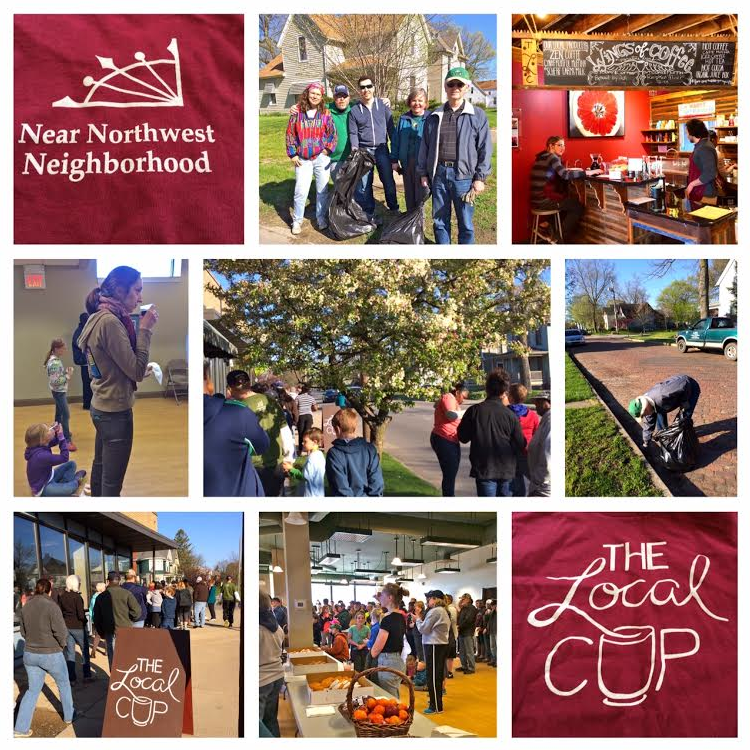
Minutes away from the Notre Dame campus and downtown South Bend, the city’s Near Northwest Neighborhood (NNN) is home to more than 25 KRMCers who are part of the congregation’s west area group.
Reportedly one of the most active neighborhood organizations in the city, the NNN “is an organization of citizens dedicated to the preservation and revitalization of the neighborhood. We focus on preserving the neighborhood’s beautiful homes and providing affordable housing, while empowering neighbors to become active participants in strengthening this historic, diverse area,” the neighborhood website reveals.
Bounded by the St. Joseph River on its northeastern edge, the neighborhood boasts a rich history dating back to the late 1600s with the discovery of the river and the creation of the portage trail, a major trade route used by French explorers and Native Americans, according to the website.
KRMCer Elaine Schmucker, who arrived in the neighborhood in 1978, explains that home prices were a major part of how she and Phil decided where to settle in South Bend: “The price was right and we liked all the features of the house. Our jobs at Hope Rescue and Saint Joseph Hospital were close by.”
The Schmuckers found their “community of Catholic charismatic people with good values and lots of children” a great place to live. Their two daughters “always had ready playmates, and many a game of capture the flag was played around this block. One neighbor remains from that group of people; she is a good and valued friend and challenges me in my spiritual life. We have had block parties, progressives, carry-ins; we are friendly and neighborly on this block. It has been a good place to live.”
Elaine, who serves as a block captain for the neighborhood’s annual adopt-a-block cleanup, says, “Our current neighbors, Bill and Judy, rent their home; Bill wants to buy it because he has such good neighbors! We talk over the back fence, share and care for each other.”
KRMCer Cathy Stoner loves the neighborhood for these reasons: “I’m thinking about the concepts of knowing and being known in the neighborhood. I feel like we’ve prioritized meeting and getting to know our neighbors since moving here 20 years ago. The rewards for this effort have been great.”
Cathy, who fixes bikes for folks in the neighborhood and monitors her family’s backyard basketball court when it is open to neighborhood kids several times a week, reports that “it’s a great feeling to walk around among homes where we know the people and they know us; same goes for the basketball court,” where she often provides snacks for the players.
She says she loves “recognizing a couple of kids in every group I pass on the street and being greeted in turn by name. I am aware of the mutual pleasure in recognizing one another every time I encounter someone I know in my neighborhood. And I realize that the intentionality behind this pleasure is key to its enjoyment. In other words, we’ve been doing the work and now it’s paying off in all kinds of ways,” she continues.
“The young people who play on our court enjoy a sense of being recognized as good kids their neighbors are glad to know…never mind that they sometimes make me lose my temper, as any kid knows how to do! And I like having my name called out on the street when I see my friends,” Cathy reports.
“These relationships make life rich, and I think people visiting or moving into the neighborhood are inspired by the way we all try to know our neighbors. There’s plenty more we can do to break down barriers that separate us, but in the meantime, we’re off to a good start,” according to Cathy. She and her husband Andre have raised their four children, two of whom remain at home, in the neighborhood.
NNN sponsors a variety of activities and events, including The Local Cup, a volunteer-run, pay-it-forward coffee shop where KRMCer Barbara Devereaux works as a Sunday afternoon barista. The Local Cup is open Saturdays from 9 to 12 and Sundays from 2 to 4 at 1009 Portage in the NNN building. Neighbors of all ages gather for coffee, tea, cocoa, home baked goods, and friendly fellowship in this space that describes itself as “building community, gratitude, and generosity in the process of supporting local producers.” The Local Cup will host a grand opening reception Thursday, May 5, from 5 to 7 p.m. Mayor Pete Buttigieg is scheduled to appear at the 5:15 ribbon cutting ceremony.
Some 200 neighbors, including10 KRMCers from the western area group (most of whom live in the NNN), helped Saturday, April 23, with the neighborhood’s 14th annual adopt-a-block cleanup. For the third consecutive year, each block in the neighborhood was adopted, according to a local news report of the event which takes place annually in connection with Earth Day activities.
While city neighborhoods are not likely to describe themselves as living into the resurrection, I have witnessed KRMCers and many other area residents doing that very thing in the Near Northwest Neighborhood! How does your involvement in your neighborhood reflect resurrection living? As warmer weather continues to coax neighbors outdoors at this time of year, watch this week for ways you might interact with those who live nearby…maybe an over-the-fence garden chat, an invitation to tea in the backyard, or a friendly exchange with dog-walkers passing by your front yard.
Add a comment
Taking time to care for the Earth
April 26, 2016
by: Jane Bishop Halteman
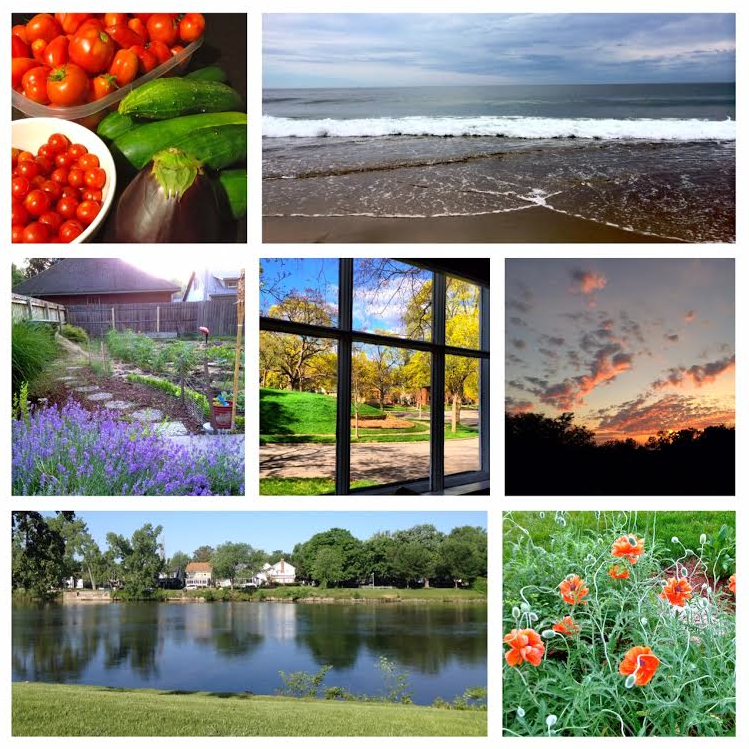
“I am convinced that there is an urgent need to address the damage that humans inflict on the Earth and on each other, to educate folks about climate change, and to take steps to ensure the wellbeing of the planet and its inhabitants for generations to come. I have come to see that Mennonites have a valuable perspective on this work, because the Anabaptist commitment to nonviolence is as relevant to how we view creation care as it is for directing our opposition to war.”
Lawrence Jennings, native New Yorker who attends Infinity Mennonite Church of Harlem and cares deeply about climate change, wrote these words back in 2014 in a MennoNerds blog guest post following Earth Day, the annual observance on April 22 marking the anniversary of the birth in 1970 of the modern environmental movement and finding ways to do justice to the Earth.
“The height of counterculture in the United States, 1970 brought the death of Jimi Hendrix, the last Beatles album, and Simon & Garfunkel’s Bridge Over Troubled Water. War raged in Vietnam and students nationwide overwhelmingly opposed it,” according to Earth Day Network.
Though much of America remained indifferent to environmental concerns back then, “the stage had been set for change by the publication of Rachel Carson’s New York Times bestseller Silent Spring in 1962. The book represented a watershed moment, selling more than 500,000 copies in 24 countries, and beginning to raise public awareness and concern for living organisms, the environment, and links between pollution and public health,” Earth Day Network continues.
On that first Earth Day, “twenty million Americans took to the streets, parks, and auditoriums to demonstrate for a healthy, sustainable environment in massive coast-to-coast rallies. Thousands of colleges and universities organized protests against the deterioration of the environment. Groups that had been fighting against oil spills, polluting factories and power plants, raw sewage, toxic dumps, pesticides, freeways, the loss of wilderness, and the extinction of wildlife suddenly realized they shared common values.”
By 1990, Earth Day went global, “mobilizing 200 million people in 141 countries and lifting environmental issues onto the world stage” as that year’s emphasis also boosted recycling efforts around the globe.
Given our denomination’s long-running interest in simplicity, good stewardship, and well-being of the powerless, it is no surprise that Mennonite Creation Care Network (MCCN), a bi-national Christian organization affiliated with MCUSA and Mennonite Church Canada, came into being in 2006, preceded by Mennonite Environmental Task Force (1991-2001) and Mennonite Creation Care Planning Group (2004-2006).
The present-day MCCN welcomes those wishing to be part of a faith-based network of people engaged in caring for creation, including congregations that grasp God’s love for all the earth, individuals and households where decision-makers consider environmental impact, schools where students of all ages learn to connect with the natural world, church agencies that choose advocates to keep creation care prominent, and the broader community shaped by creative approaches to transportation, housing, food, waste disposal.
The organization’s website states that congregations “are the primary focus of Mennonite Creation Care Network’s energies. MCCN encourages congregations to appoint a creation care liaison and become one of the network’s 100 Shades of Green Congregations. Preaching, teaching, community gardens, advocacy, and eco-justice work are a few of the ways congregations care for the earth.”
Kern Road has been active for years in energy conservation, both in the construction of the present church building, and by inviting members/participants to conduct energy audits in their own homes. Some years ago our junior high students made recommendations based on their energy audit of the building, and just this past calendar year KRMC installed solar roof panels.
The congregation has invited the community to a Solar Energy Celebration and Open House Saturday, May 21, from 2 to 4 p.m., during which time participants will learn how solar panels help save energy and reduce KRMC’s carbon footprint. Government officials, including Mayor Pete Buttigieg, and a representative from Hoosier Interfaith Power and Light (HIPL), an interreligious organization promoting energy conservation and clean energy in faith communities across Indiana, will be invited. KRMC’s solar panels were funded in part by a $24,000 grant from HIPL.
Consider the resources offered by Global Footprint Network as you assess how living into the resurrection might include care of the earth this Eastertide in your own household, as well as in our city and country. Global Footprint Network is “an international think tank that provides ecological footprint accounting tools to drive informed policy decisions in a resource-constrained world. We work with local governments, investors, and opinion leaders to ensure all people live well, within the means of one planet.”
Add a commentBringing healing and hope to orphaned boys
April 18, 2016
by: Jane Bishop Halteman
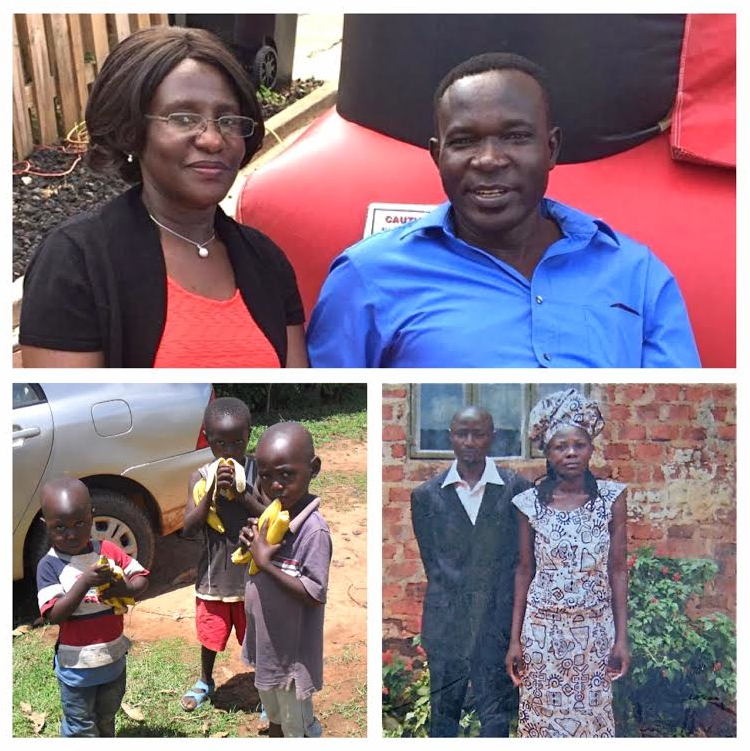
Eunice and Leonard, top photo; orphaned brothers, Peter and Castro, left and right in lower left photo; orphaned boys' parents, Peter and Francisca Dorine, lower right photo
“I will feel like I have abandoned them if I can’t get them here,” says Leonard Amuok of his nephew Peter’s orphaned children. “So many relatives are struggling, and I would love to bring other relatives’ children, too, Leonard continues, but finances limit what his family can do to help.
Leonard, presently on KRMC’s church board, and his wife Eunice Oduor and their four children came from Kenya to the United States in 2004 upon winning the green card lottery. They settled at Kern Road via some Mennonite connections from back home, where family members still live in rural communities, at some distance from the nearest big city, Kisumu, Kenya’s third largest city and principle city of western Kenya.
According to Wikipedia, The Immigration Act of 1990 established the Diversity Visa program, also known as the green card lottery, making 55,000 immigrant visas available in an annual lottery, starting in 1995. The lottery aims to diversify the immigrant population in the United States by selecting applicants largely from countries with low rates of immigration to the United States in the previous five years.
Leonard’s brother’s 30-year-old son Peter died in 2012 while working at a construction site in Uganda. Peter didn’t have proper safety equipment, according to Leonard, and was killed instantly in a fall. Peter and his wife, Francisca Dorine, then six months pregnant with their second child, also had a two-year-old son, Castro, at the time.
When he traveled to Kenya for nephew Peter’s funeral back in 2012, Leonard noticed that Francisca Dorine had a swelling on her neck, which he suggested she should have checked by a physician. Eventually she began taking medication for a goiter, and Leonard mentioned the possibility of surgery if necessary.
She gave birth to the couple’s second son, Peter, and seemed to be managing as well as could be expected by selling vegetables to make a small living, with occasional contributions from Leonard and Eunice, who also had funded the elder Peter’s high school education. Francisca Dorine died quite unexpectedly at home in October of 2015, leaving behind their two sons.
Upon hearing of her sudden passing, “I immediately thought: what will happen to the kids?” Leonard recalls. Because family members are already providing for adult children and in some cases grandchildren as well, Leonard and Eunice did not believe chances were good that relatives in Kenya could find a way to take in the orphaned children permanently. “So many people are idle with no options for work,” he noted, adding that those who might go off to try to make a day’s wages could potentially come back with $10 or $20.
Leonard and Eunice began to consider bringing the children to the United States, when they realized that “if the children go to relatives still in Kenya, there would be no guarantee that our donations to help would actually assist with the children’s support” due to so many other financial needs.
Following Francisca Dorine’s death, Leonard spent six weeks in Kenya. In order to begin the process of bringing the children out of their home country, he needed to file for death certificates for the children’s parents and birth certificates for the children, none of which had been processed at that point in time.
Because his nephew died in Uganda on the job rather than in his home country, acquiring that death certificate was particularly difficult. Leonard found application offices constantly filled with people. “I don’t believe in bribery, but you can’t avoid it. There is no other way but to grease palms.” And after all the requisite forms had been signed, there were the tedious waits for ancient typewriters to crank out official documents, Leonard reports.
Having acquired those four documents, Leonard and Eunice will ask for legal custody of the orphaned boys, now nearly six years old and four years old. They expect to retain a lawyer in order to prepare for the Children’s Services’ presentation to the Kenyan High Court to verify and certify that they reside abroad, that they are related to the children, and that the children are, indeed, orphans.
On the United States side, says Leonard, it will cost $1,900 to file Department of Homeland Security forms to begin background checks for himself and Eunice in addition to their three young adult children Celia, Wendy, and Brian; son Castro passed away in April of 2014. Home studies will follow in preparation for receiving the boys.
“I would love to see them here in six months,” says Leonard, but he knows that timeline is not probable. Hopeful that perhaps they will arrive within a year, he says he is concerned that the children are currently with different family members separated by 20 miles. As plans and financial needs become more clear, we at KRMC will be watching for ways to help this family live out their resurrection dream to bring glimpses of healing and hope into these young boys’ lives.
“Through the grace of God, perhaps all these obstacles I’m seeing may disappear,” says Leonard optimistically! The family welcomes prayers and logistical support as the process continues.
Add a comment

